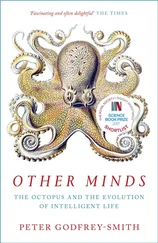In financial matters one of the great problems of Western civilization from the earliest period had been fluctuations and, above all, limitations on the volume of money. So long as money was in the form of specie there could be no close correlation between the volume of money available and the economic need for money as a medium of savings and exchange. The volume of money was strictly related to the supply of bullion except for minor influences (like hoarding, flows of specie to India and the East, and such), but this supply was in no way related to economic needs. We have seen that the supply increased too rapidly in the three centuries 1000-1300, then increased far too slowly (because of exhaustion of existing mines within the framework of the existing technology) for the next century and a half (1300-1450), then was expanded in a spectacular and accidental way, quite out of relationship to economic need, by Spanish access to the bullion stores of Mexico and Peru (1450-1650), but that the diffusion of these stores left the economy of Western civilization on an inflated price level that could not be sustained by any continued increase in bullion supplies. Thus, by the late seventeenth century and much of the eighteenth century, the flow of bullion was not sufficient to satisfy either the demands of an expanding economic system or those of a mercantilist political system supported by a mercenary military system. This inadequacy began to be remedied at the very end of the seventeenth century, notably by the establishment of the Bank of England in 1694. This remedy rested on the use of banknotes backed to only a fractional part of their value by specie reserves. This was a partial solution of the problem of money for two reasons: (1) it permitted a great increase in the volume of money when the supply of bullion was increasingly inadequate and (2) it permitted the volume of money to fluctuate to some extent in response to changing needs for money in the economy.
This new technique of monetary manipulation became one of the basic factors in the great Age of Expansion in the nineteenth century and made the fluctuations of economic activity less responsive to the rate of bullion production from mines, by making it more responsive to new factors reflecting the demand for money (such as the interest rate). This new technique spread relatively slowly in the century between the founding of the Bank of England and Napoleon's creation of the Bank of France in 1803. The Napoleonic Wars, because of the backward, specie-based, financial ideas of Napoleon were, on their fiscal side, a struggle between the older, bullionist, obsolete system favored by Napoleon and the new fractional-reserve banknote system of England.
A similar situation existed in regard to food production. No very impressive economic expansion was possible in the eighteenth century without some new agricultural techniques capable of increasing the output of food. No such increase could be expected so long as the medieval three-field system with its unenclosed scattered strips and free-ranging farm animals continued. This medieval system had been a great success in its day, greatly superior to the old classical two-field, slave system, and capable of supporting the new Western civilization through its first two Ages of Expansion, but by 1650 its output per man-day of work was not sufficient to support any notable increase of the proportion of the population in crafts and trade, and it was, of course, quite incapable of providing the food or raw materials for industrialism.
This medieval organization of agriculture was fully institutionalized by 1650 and had become a great obstacle to continued expansion. Just at that point, however, there became available in western Europe the elements of a new agrarian system fully capable of supporting a new period of expansion and destined to do so in the nineteenth century.
The new organization of agriculture is usually known as the agricultural revolution. In essence it abandoned the three-field system for a leguminous-rotation system in which a leguminous crop was put in place of the fallow stage in the older three-stage cycle. Such a leguminous crop (like alfalfa or clover) put much more nitrogen in the field than any fallow year ever could, but it required a major reorganization in livestock handling. Animals had to be fenced in rather than fenced out of the arable field as in the older system, because the fallow and, to a lesser degree, the stubble, on which medieval livestock had foraged, were gone. Fencing in of animals (or enclosure) had three important results: (1) selective breeding could be practiced, with a great improvement in the quality of farm animals; (2) animal manure was now available in quantity to be used where its fertility was most needed; and (3) feed had to be supplied to the animals, thus providing a use for the leguminous crop that had been put into the fallow stage of the older cycle. There was thus a drastic increase in size, quality, and numbers of farm animals as a consequence of the agricultural revolution. As an index of this we might note that the slaughter weights of farm animals tripled at Smithfield Market in England during the eighty-five-year period ending in 1795.
The agricultural revolution did not cease with the factors we have mentioned, but included a number of other significant items. Enclosure ejected a considerable number of subsistence peasants from the agrarian system and led to larger holdings and some degree of rural depopulation, thus providing manpower for increased commerce and industry. It also made possible numerous other technical advances, many of them associated with the ideas of rural eccentrics like Jethro Tull (1711). These included planting of seed in rows, in holes in the ground, by use of a seed drill instead of broadcast surface sowing as in the Middle Ages. This encouraged seed selection and the use of horse-drawn cultivators.
The agricultural revolution was the basis of the new Age of Expansion that began in England about 1730 but that had not yet reached France a generation later. This fact was perfectly clear to Arthur Young when he traveled in France just before the French Revolution. As a consequence, the Napoleonic Wars were, from this point of view, a conflict between the older three-field fallow system and the newer enclosed leguminous rotation systems (frequently called, in France and elsewhere, the "Norfolk System").
There was also a third important element in this situation. This was the shift from a craft system of manufacture to an industrial system. The vital point about this shift is not so much the growth of the factory system or the growth of an urban proletariat that did not own the tools it used, as the shift from an economy in which production was achieved by energy released in living bodies (man- or animal-power) to one in which production was achieved by energy released through nonliving mechanisms (water power or steam engines). This shift, which permitted great increases in production of manufactured goods, would never have been possible without the agricultural revolution that preceded it and possibly without the advent of a fractional-reserve banking system as well. The change, which is usually called the Industrial Revolution, was in full development in England but was largely unknown in France during the Napoleonic Wars. In this regard, also, these wars represented a conflict between a newer organization for fulfilling human desires and an older, obsolescent one.
There is a fourth way in which the Napoleonic Wars represented a struggle between the new and the old. On the Napoleonic side we find ranged all the forces of mercantilism, meaning the theories and the vested-interest forces that believed that economic life had to be regulated by the government and regulated for largely political ends. This system played a very significant role in Western civilization in the period 1200-1800, but by the latter date it was clearly obsolete, and had to be replaced by a more advanced system. This newer system of economic management is known as laissez-faire and, as is well known, it was associated with the period of expansion of the nineteenth century. What is not so well known, however, is what the shift from one to another really entailed.
Читать дальше










